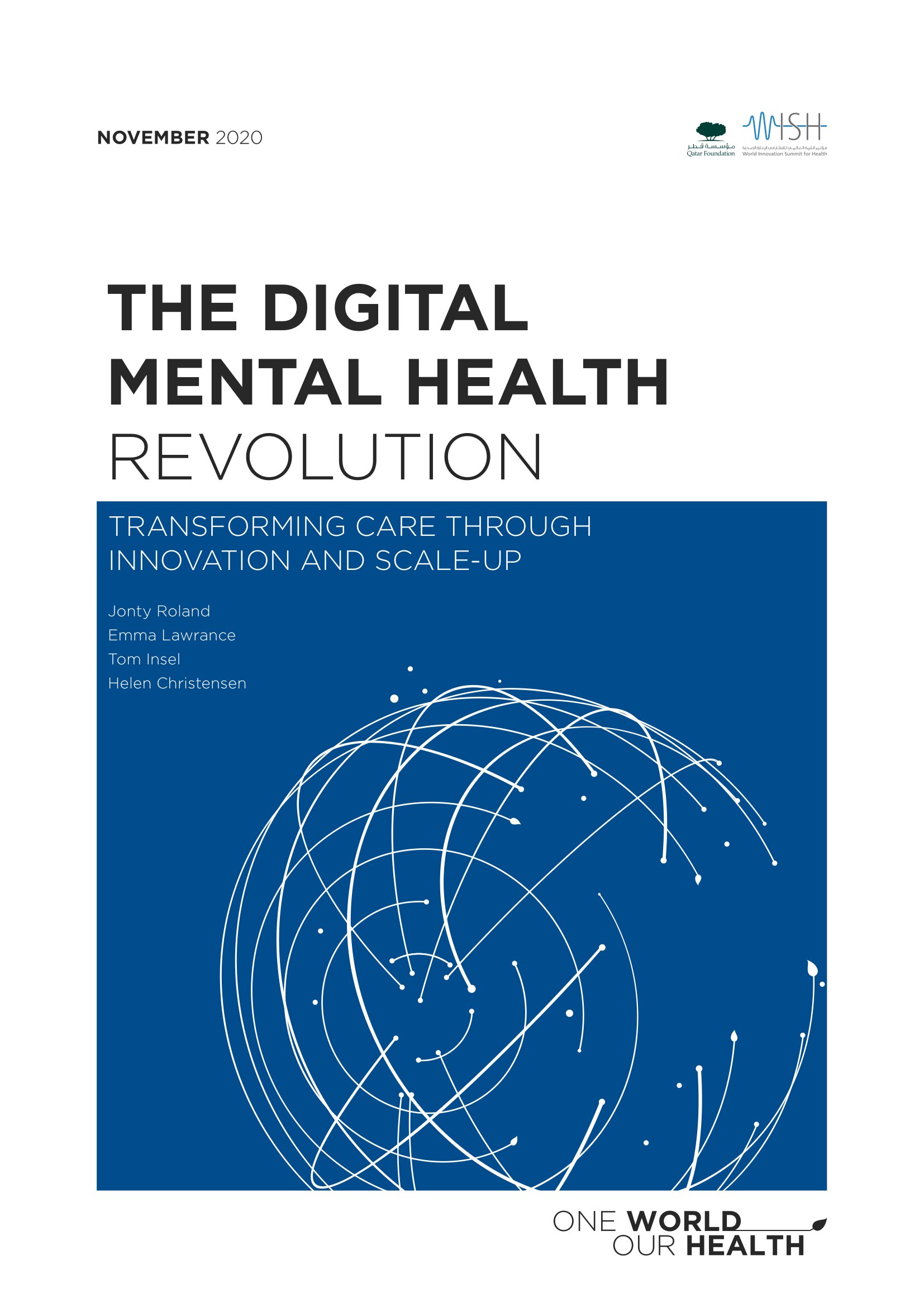Executive Summary
Of all the fields in healthcare, the opportunity for digital transformation in mental health is one of the greatest. This is partly because most mental health services are limited to verbal exchanges that can be readily provided remotely. More importantly, it is because – in the words of The Lancet Commission on Global Mental Health and Sustainable Development – “all countries are developing countries”.1 That is, the gap between what people need and what current systems can deliver in high-, middleand low-income countries is currently so great that only a revolution in access, quality and engagement through technology can meaningfully address it. For modern health systems, digital mental health tools are not just a future luxury, they are an urgent necessity.
In recent years there has been an explosion of new digital tools for mental health assessment, support, prevention and treatment. There are now more than 10,000 mental health apps available, and almost 100 new digital mental health start-ups every year. Some of these tools have proven effectiveness, are low cost, and are already benefiting millions of people around the world – for example, instant crisis text messaging, digitized or ‘gamified’ versions of cognitive behavioral therapy (CBT), and online training packages for frontline staff. (See WISH 2018 Anxiety and Depression Report for further information and additional case study.) However, many other tools have underperformed, meaning the gap in ‘effective coverage’ for mental health disorders still remains, with as few as one in 10 people in need benefiting from traditional mental health services – even in well-resourced health systems.
One factor that has held back progress is the polarized innovation landscape, where invention and implementation largely take place in two parallel tracks: academically driven innovations backed by rigorous evidence of efficacy in trials, but disappointing levels of impact in the real world; and commercially driven innovations with (in some cases) high levels of engagement but little interaction with formal health systems, and often weak evidence of effectiveness.
Today, the sector is at a critical inflection point, in part driven by the accelerated shift to online care necessitated by the COVID-19 pandemic. Many mental health systems rapidly shifted from almost entirely face-to-face to nearly all virtual within just a few weeks. While some mental health leaders have described this as a ‘decade of progress within two months’, the scale-up has also revealed how current digital mental health approaches and tools remain fragmented, heavily reliant on traditional treatment approaches, and largely neglect user experience and engagement.
The next generation of technologies is needed more than ever to combine the best of clinical science and consumer engagement. The challenge for developers and health systems is to create solutions that look fundamentally different from traditional mental health services. This is a much more profound shift than simply digitizing interventions that work offline. For technology to close the efficacy gap, innovators will need to pare down mental healthcare back to its essential ‘active ingredients’, and then use the full capabilities of digital technology and human practitioners to create instantaneous, adaptive and scalable services.
The framework shown in Figure 1 gives a simplified overview of the current digital mental health landscape, highlighting 10 key areas of innovation. Many of the best examples integrate several of these applications into one platform, and bridge the divide between consumers and professionals.

